|
|
Spencer Carbine 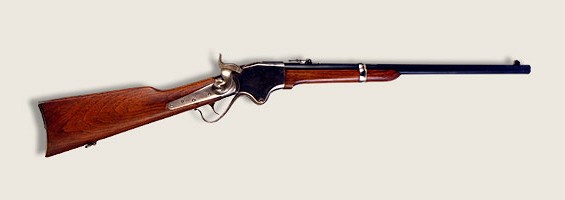
The Spencer Carbine was issued to Union troops in the Civil War in 1863. The Spencer Rifle was a repeating rifle capable of firing seven rounds with each lowering of the trigger guard. Although outnumbered by the Plains Indians, the Spencer provided the Cavalrymen with accurate and withering firepower. It had a slower rate of fire than the Henry repeating rifle but was very accurate and easy to clean. Sharps Carbine  The Spencer rifle was replaced by Army in the 1870's. The Department of the Army believed repeating rifles encouraged the troops to waste ammunition. The troopers carried the “trapdoor” Springfield or the Sharps carbines, both in .45-70 caliber. The troops who carried the Henry during the Civil War liked it very much (they had to buy it out of their pay, or pick it up on the battlefield). They said; “you can load it on Sunday and fire it all week.” It held 15 rounds. The Sharps was manufactured by the Sharps Rifle Company, was very accurate and had an effective range of 500 yards. weighed 8 pounds and an experienced shooter could get off 8-10 round per minute. A YouTube clip from the motion picture, Quigley Down Under, depicts actor Tom Selleck putting on a shooting demonstration using his Sharps .45-70 caliber. It is Hollywood, but it illustrates the operation of the legendary Sharps. Springfield Rifle  The Springfield (.45-70) 45s were single shot weapons that had to be reloaded after each fired round. As previously indicated, the Army had recognized that a soldier armed with a repeating rifle would expend a large amount of ammunition during battle whether he had a clear target in sight or not. The belief was that with a single shot rifle, the soldier would become more efficient with his ammunition and take only clear shots at his target. The best effective range for the Springfield .45 carbine was less than 400 yards, but significant hits could be made up to 600 yards. A short video clip shows why the 1873 Springfield Trapdoor Carbine .45-70 was so effective. Colt Walker Pistol 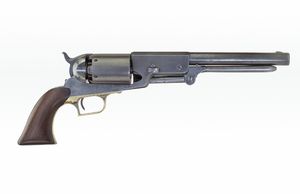 The Colt Walker Pistol was very accurate to 100 yards and delivered devastating stopping power. The Colt Walker was as effective as a common rifle at 100 yards and more effective than a musket at 200 yards. Colt .45 Single Action 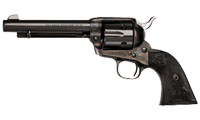 The Colt .45 single action revolver and the Schofield .45 revolver were used by the U.S. cavalry in the 1870's. The Colt Single Action Revolver was also known as the Colt Peacemaker. The Colt Single Action Revolver is a single action revolver holding 6 rounds of ammunition, that was designed for the U.S. cavalry by Colt's Manufacturing Company and adopted in 1873, and it was perhaps the most prolific pistol in the wild west. M1869 Schofield .45 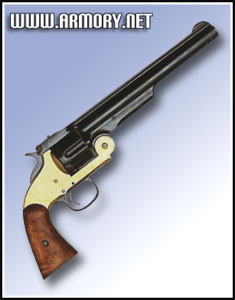 Although this pistol was used by the U.S. Cavalry, Wells Fargo agents and Frank James, due to it's lesser power compared to the Colt .45 it was never adopted as the official sidearm of the Army. McClellan Saddle 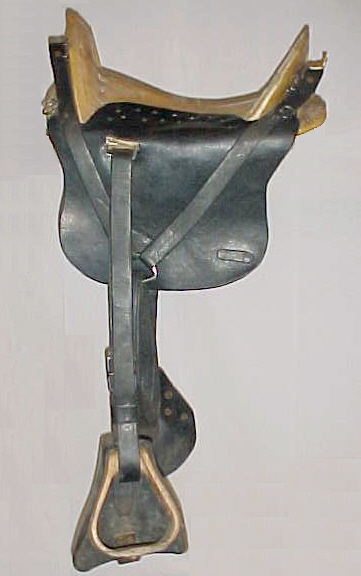 Cartridge Belt 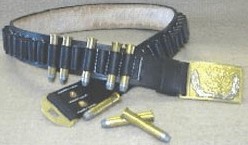 Belt Buckle 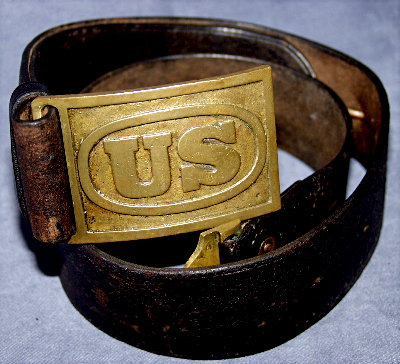 Holster 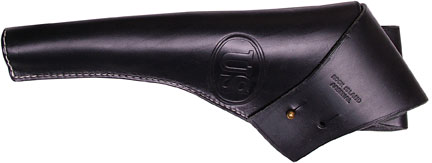 Cavalry Trousers  Cavalry Slouch Hat 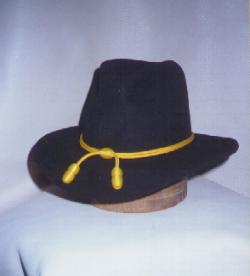 Cavalry Hat 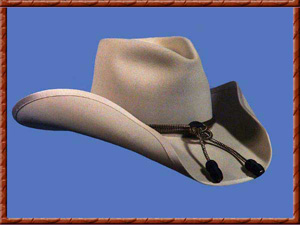 1872 Enlisted Forage Cap 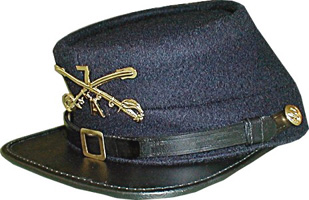 Cavalry Blouse 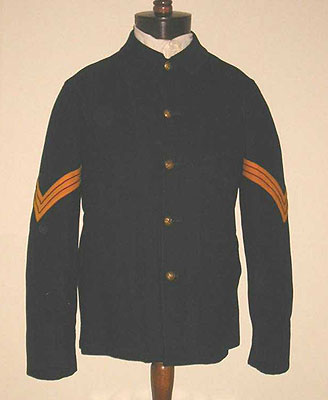 Cavalry Gauntlets 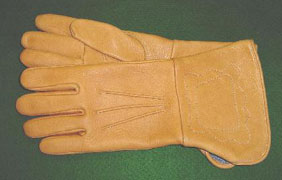 Cavalry Boots 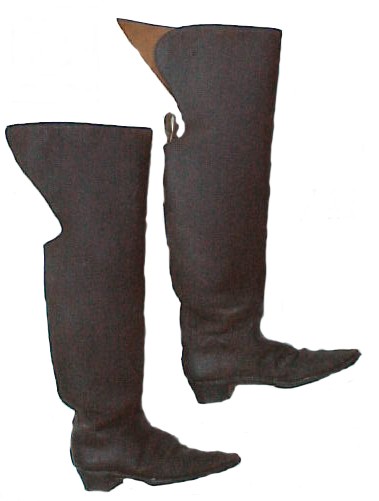 Enlisted Cavalry Spurs  U.S. Army Service Stripes 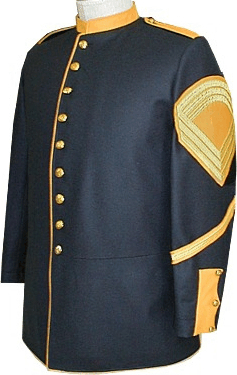 Cavalry Sergeant Major Dress Coat with Service Stripes The U.S. Army established the tradition of Service Stripes in 1855. The Army authorized length of service stripes (commonly called "hash marks" today) to be worn on the sleeves of the Dress Coats (Frockcoats or Shelljacket). Each stripe indicated 5 years of "faithful service," i.e., three Service Stripes denoted 15 years of service. The stripes are sewn onto one badge and designate Service in Peace . A single blue stripe denoted 5 years service in the infantry, a single yellow stripe denoted 5 years service in the cavalry and a single red stripe denoted 5 years service in the artillery. For all branches except Artillery, Army Service in War was indicated by placing a red border around the the edges of the service stripe. The Artillery Service in War indicator was red over light blue. In the case of an Artillery soldier with combat experience, because his Service Stripe is already red, his Service Stripe would be a red service stripe with blue edges around the service stripe under it. See the below photo 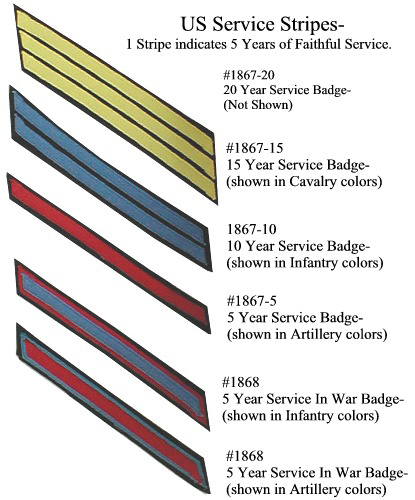 Note the Service Stripes of this 1872 First Sergeant's dress coat. His First 5 years was with the Artillery Branch. His Second 5 years was with the Cavalry and was during war as the yellow service stripe is bordered in red, and the light blue service stripes denotes 10 years service in the Infantry. Also not. the second photo of the Ordinance Sergeant with red piping denoting his service in the Ordinance Branch which shared red service stripes and piping with the Artillery Branch. 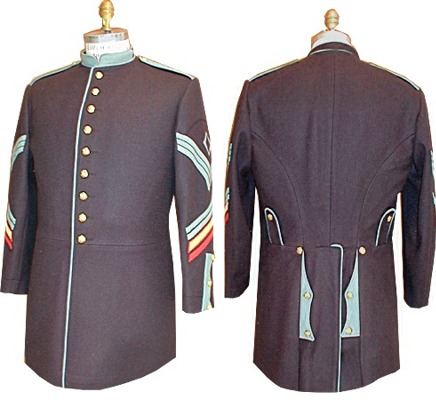 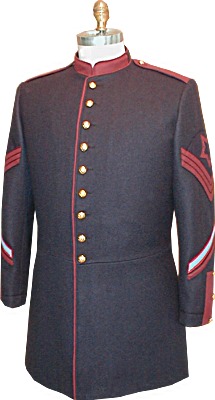
In the last example we have a Cavalry Corporal who served 5 years (in wartime) with the artillery, note his bottom service stripe is blue bordered in red and he served 5 years with the cavalry in peace time. The 3rd photo is of a Mounted Artillery jacket and the 4th Signal Branch jacket. (Note the red "Hash Marks")  |
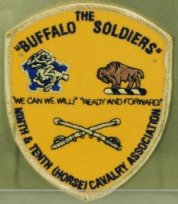 Buffalo
Soldiers
Buffalo
Soldiers